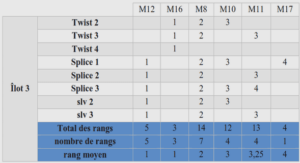Route to Bimodal Micro Mesoporous MOF Nanocrystals
Introduction
Crystalline MOFs, constructed from the assembly of organic linkers with metal ions or metal clusters, are scaffoldings with all or most atoms on internal surfaces, which leads to exceptionally high surface areas (up to 6500 m2g-1) and pore volumes (up to 3.6 cm3g-1).1-3 They have emerged as an important new class of materials with a significant impact in molecular separation, gas storage, catalysis, sensing, and drug delivery.1-4 Although MOFs exhibit very large surface areas, the microporosity of these materials (pore size < 2 nm) restrains the accessibility of a significant portion of the surface area to large guests, which limits their potential applications. Therefore, to upgrade the performance of these materials, attempts have been made to synthesize porous materials with large pore diameters in the 2 to 50 nm range.2,3,5 For example, MIL-101,2 UMCM-23 and PCN-1055b exhibit mesoporous behavior owing to mesoporous cages found throughout the structure; however, the mesopores are often restricted by small apertures that prohibit large molecules from accessing the space inside. Increasing the organic linker length is another option but, with few exceptions,1,6 the MOFs built up from long-linkers tend to collapse upon guest removal7 or form catenated structures.8 As in the case of microporous zeolites,9,10 materials with bimodal micro-/mesoporosity are of considerable interest for many potential applications, such as drug release, gas storage, separation and catalysis because they offer the benefits arising from the combined two regimes.10, 11 However, no rational synthetic procedure to incorporate mesopores in MOFs that can be applied to a large array of carboxylate-based MOFs has yet been reported.12 We report here a novel methodology toward the synthesis of a new family of bimodal micro-mesoporous MOF nanocrystals via the coassembly of nanosized MOF building blocks with a non-ionic triblock copolymer surfactant in the presence of acetic acid. The use of a large triblock copolymer surfactant such as F127 (EO97PO69EO97) as a mesostructured template induces the ability to crystallize a MOF structure of pore walls while the presence of acetic acid allows controlling the rate of crystallization of the framework to form well-defined mesostructures within the crystalline MOF nanocrystals.
Experimental
Chemicals: CH3COOH (99.7%, Fisher), Pluronic F127 (EO97PO69EO97, average Mn 12,600, Aldrich), 1,3,5-Benzenetricarboxylic acid (H3BTC, 95%, Adrich), 1,3,5-Tris(4carboxyphenyl)benzene (H3BTB, 98%, Aldrich), Cu(NO3)23H2O (99%, Aldrich), and anhydrous ethanol as solvent were purchased from commercial sources and used without further purification.
Synthesis
Bimodal micro-mesoporous MOFs nanocrystals were prepared by using a solvothermal synthesis in the presence of triblock copolymer F127 as the template and acetic acid with various molar ratios of acetic acid/Cu2+ in ethanol. In a typical synthesis of bimodal micro-mesoporous [Cu3(BTC)2] based MOFs, namely, UL1MOF-x, 0.618 mL (10.8 mmol) of acetic acid was added to a 6 mL ethanol solution containing 0.435 g (1.8 mmol) of Cu(NO3)23H2O. To this solution, 0.216 g of F127 surfactant pre-dissolved in 6 mL of ethanol was added. After stirring for 2 h, 0.221 g (1.0 mmol) of H3BTC was added. After stirring for an additional 2 h, the reaction mixtures were heated at 120 °C for 16 h. The product was washed several times with ethanol, recovered by centrifugal separation, and then dried at 70 °C for 4 h. To remove the surfactant, the products were treated with tetrahydrofuran (THF) in the presence of acetic acid as solvent (molar ratio acetic acid/THF = 0.15/1.0) with the ratio of 1 g of the material for 400 mL of the solvent at 100 °C for 24 h. The same procedure was used for the synthesis of bimodal [Cu2(HBTB)2] based MOFs, namely, UL2MOF-x, except that H3BTB was used as linkers instead of H3BTC, with the molar ratio of Cu(NO3)23H2O/0.28 H3BTB/33 CH3COOH/0.05 F127/620 C2H5OH, at 110 °C for 16 h.
Characterizations
Powder XRD patterns in the 2θ range of 0.5 – 5° for SAXS and 5 – 50° for WAXD were collected on a Bruker SMART APEX II X-ray diffractometer equipped with Cu K radiation (40 kV, 30 mA). SEM images were taken with a JEOL 6360 instrument with an accelerating voltage of 3 kV. TEM images were obtained with a 120 kV JEOL JEM 1230 electron microscope. HRTEM investigations were carried out on a JEOL JEM-2100F electron microscope operating at 200 kV (point resolution 0.1 nm). N2 adsorption-desorption isotherms were measured at the temperature of liquid nitrogen with a Quantachrome Autosorb-1 system. The BET surface areas were calculated from the experimental pressure ranges identified by established consistency criteria reported by Walton and Snurr for metal-organic frameworks,13 herein the 0.05 0.15 P/P0 range of linearity of the adsorption isotherm. The pore size distributions were obtained from the analysis of the desorption branch of the isotherms using BJH model. TGA/DTA analysis was carried out with a Netzsch STA 449C thermal analysis instrument from room temperature to 500 °C with a heating rate of 5 °C min-1 under an air flow of 20 mL min-1 using the Netzsch Proteus data analysis package. The elemental analysis of carbon and copper was performed using a Perkin-Elmer 240C elemental analyzer and a Perkin-Elmer Analyst 200 Atomic Absorption Spectrometer, respectively.



